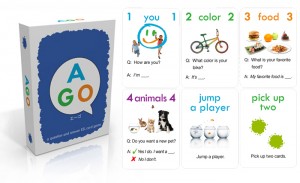business curriculum expectations iPhone iTunes store presentations self-study teaching technology
by sendaiben
leave a comment
6th grade iPhone app developer -very inspiring
The title above says it all. I would love to see more of my students thinking beyond the education box.
Tip of the hat to Parin.
curriculum EFL evaluation expectations extensive listening extensive reading university vocabulary
by sendaiben
leave a comment
The shock of sudden realization…
I was having an imaginary conversation with my boss the other day (something that happens a bit too frequently, perhaps), and had just finished telling him what a ridiculous concept it was to judge the performance, impact, or value of a teacher by the amount of time they spent at work when I had a huge revelation.
That is precisely how I evaluate some of my students!
Particularly for extensive reading, vocabulary study (using online tools such as the Word Engine), and listening, I tend to look at how much time students spent doing an activity, rather than how effectively they did so. The student that spends twenty minutes intensely focused on the task will fare worse than the one who sits there daydreaming for an hour, even though they probably got much more out of it.
In my defense, the main reason for this is that it is fairly difficult to evaluate how effectively someone has, for instance, read something, but it is also down to laziness on my part. Just as it would be ridiculous for my boss to judge my performance solely by how long I spent sitting in my office, I need to start thinking about how to assess my students in a fairer and more accurate way.
Part of it, I suspect, is going to depend on me giving up on being a teacher (look out for a post on this next week!).
How about you? Do you evaluate students based on their presence rather than their engagement?
curriculum EFL eikaiwa ES kids language courses Language learning school management speaking teaching
by sendaiben
4 comments
AGO: the best 900 yen you’ll spend this week
AGO is a card game, similar to UNO or Switchit, that practices simple question and answer patterns. It is ideal for upper elementary or junior high school and above. Students play to get rid of all their cards: the first person to do so is the winner. The game mechanics are easy, and almost all students already know them from playing UNO.
There are eventually going to be three levels: aqua, green, and orange (hence AGO, but I suspect that the pun with eigo was also a factor in naming this product). The first level, aqua, contains very easy questions like ‘do you like…?’ and ‘what season is it now?’. There is some scope for personalization.
The green level just came out at the end of last month, and includes more complex questions, more scope for students to make their own questions, and more ‘game cards’ (‘pick up’, ‘jump’, and so on).
The orange level is due to be released next year.
The production values are pretty good and the cards look and feel great. Well worth the 900 yen, especially if you teach junior high school and up.
iPhone 4S in Japan, part 2
Well, I take it all back.
After a couple of weeks of enduring the increasingly frequent delays on my iPhone 3GS with iOS 5, I finally decided to update to the newest model.
Softbank has two fairly nice programs for customers who are updating, so I was happy to stay with them (my wife signed up for an iPhone with AU, and I have not been impressed with their staff training and readiness for the product), namely
1. they will forgive all payments due on a previous iPhone, allowing you to upgrade and just pay for the new phone (you can sell your old one online -a friend got over 12,000 yen for her old 3GS) or
2. if you have already paid off your previous iPhone, they will give you 6,000 yen cashback
The phone arrived in just over a week, and I got it on Thursday evening.
Wow.
The camera, the speed, the… display.
If you are on the fence about the 4GS, do yourself a favour and get one. It’s that good.
business curriculum EFL eikaiwa ES kids language courses Language learning online resources school management self-study teaching vocabulary
by sendaiben
leave a comment
Quizlet may just be what I have been looking for all these years…
For years, I have been looking for a simple, cheap (free?) online tool to allow our younger students to work on their vocabulary outside of class.
Jim George, a friend and fellow school owner, has been going on about Quizlet for a while now, but I didn’t really pay attention until he sent me a detailed email this morning explaining the functionality.
It looks great.
Basically it’s a site that allows people to create and study simple flashcard quizzes online. Free accounts (students) can access content and premium accounts ($15 a year) can create quizzes with words and pictures.
The great thing about it is that as a school we can create study groups and upload content for the students to practice every week. Students can make accounts and join the groups and practice the content for their class. We can also monitor their progress by ‘friending’ them.
It sounds like it has everything we need. I’ll be trying it out over the next few weeks, then I’ll report back with my impressions.
Anyone else use Quizlet?



